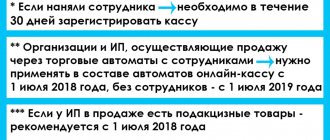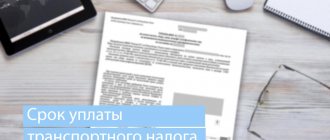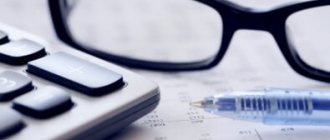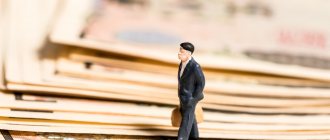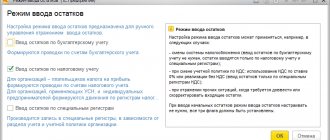The simplified system has many advantages: low tax burden, small volume of reporting, and the ability to choose the tax base. But sometimes businessmen have to abandon it in favor of the general taxation system (OSNO). We will tell you how to switch from the simplified tax system to OSNO and in what cases it is necessary.
The procedure for switching from the simplified tax system to the OSNO in 2021
- Voluntary transition from simplified tax system to OSNO
- Forced transition from simplified tax system to OSNO
Accounting for income and expenses
Accounting for fixed assets and intangible assets
VAT calculation
Consequences of the transition from simplified tax system to OSNO
How to make the transition from the simplified tax system to the OSNO in 2020-2021
The simplified tax system and the OSNO are such different taxation systems that it is very difficult to compare them.
OSN provides for the maintenance of full accounting with the accrual and payment of all types of taxes. The simplified tax system allows for the payment of a minimum amount of taxes. How to switch from simplified tax system to OSN? A transition from one tax regime (STS) to another (OSN) is possible in the following cases:
- Termination of the use of the simplified tax system on a voluntary basis when submitting a notification to the tax office (clause 6 of article 346.13 of the Tax Code of the Russian Federation). It must be sent to the Federal Tax Service no later than January 15 of the year from the beginning of which the regime change takes place. The notification is submitted in form No. 26-2-3 (approved by order of the Federal Tax Service dated November 2, 2012 No. ММВ-7-3/829).
Important! It is mandatory to submit a notice of voluntary departure from the simplified tax system, according to the Ministry of Finance. Without doing this, you cannot begin to apply the general taxation regime. You can find out how the latest judicial practice on this issue is shaping up from the analytical collection from K+, having received free access to the system.
- Forced termination of the use of the simplified tax system as a result of exceeding the maximum permissible level of annual income or violation of other conditions for the use of the simplified tax system (clause 4 of article 346.13 of the Tax Code of the Russian Federation). A notice of termination of the use of the simplified tax system is submitted within the first 15 days of the quarter following the one in which the conditions for the use of the simplified tax system were violated. The notification is submitted in form No. 26-2-2 (approved by order of the Federal Tax Service dated November 2, 2012 No. ММВ-7-3/829).
Important! If you are late or do not submit this notice at all, you may be fined 200 rubles. (Clause 1 of Article 126 of the Tax Code of the Russian Federation, letter of the Ministry of Finance dated December 6, 2017 No. 03-11-11/81211). For the director of an organization (chief accountant or other official), an administrative fine of 300 rubles is also possible. up to 500 rub. (Part 1 of Article 15.6 of the Code of Administrative Offenses of the Russian Federation).
How to recover VAT
When using the general regime, VAT must be charged at the rates that are relevant at the time. This means that if you switched to OSN from a special regime in which this was not necessary, VAT will have to be restored.
The tax must be calculated on:
- Types of operations that are associated with the shipment of goods, the provision of services for the period that began on the 1st day of the month in which you began working for OSNO;
- For the advances that you have already received from clients, from the 1st day of the month you started working for OSNO.
For these transactions, you generate invoices and transmit them to clients to justify the right to deduct VAT.
What does it mean to “go wild”?
“Flying off the simplified system” is what people call the loss of the right to use the simplified tax system. To do this, you need to exceed at least one of the taxpayer’s performance indicators:
- OS cost - 150 million rubles. in 2020-2021;
- average number of employees - 100 people;
- established income limit: in 2021 - 150 million rubles, for 2021 this amount will be indexed;
Important! Starting from 2021, exceeding income and headcount limits does not immediately lead to dismissal from the special regime. As of 01/01/2021, transitional provisions are in effect that allow in such a situation to retain the right to simplification, albeit on slightly less favorable terms. See our article for more details.
- start engaging in activities incompatible with the simplified tax system, for example, producing excisable goods, organizing a pawnshop (clause 3 of article 346.12 of the Tax Code of the Russian Federation);
- acquire a branch (in this case, the presence of a representative office or other separate division does not interfere with the use of the simplified tax system);
- exceed the 25 percent share of participation of legal entities in the management company of a simplified company;
- become a participant in a simple partnership agreement or trust management of property (clause 3 of Article 346.14 of the Tax Code of the Russian Federation).
If you lose the right to use the simplified tax system, you need to calculate and pay the taxes used under the OSNO. This is done according to the rules that are prescribed in the Tax Code of the Russian Federation for newly created organizations or newly registered individual entrepreneurs. You will not have to pay fines and penalties for late payment of monthly payments during the quarter in which you switched to OSNO.
During the transition period from the simplified tax system to the OSN, it will be necessary to determine:
- The amount of accounts receivable, since under the cash method and under the accrual method, income will differ.
- Accounts payable for taxes, employee salaries, and to suppliers.
- Outstanding accounts payable.
- Residual value of the property.
All these indicators will help in calculating tax bases and taxes themselves.
How to calculate and pay taxes, as well as submit reports in case of loss of the right to the simplified tax system, is explained in detail in the Ready-made solution from ConsultantPlus. If you do not yet have access to the system, get it absolutely free and go to the material.
What to do if the tax office has reported non-compliance with the conditions of the simplified tax system, read here.
Reports for individual entrepreneurs on OSN
First of all, you must keep a sales book and a purchase book. This is necessary to calculate VAT. If we talk about boo. accounting, then the individual entrepreneur does not have to keep it. All activities carried out by an entrepreneur will be reflected in the book of income and expenses.
As for reporting, if an individual entrepreneur switches to OSNO and if there are employees, you need to submit to the Federal Tax Service:
- Once every 12 months, submit a book to the Federal Tax Service that records your income and expenses;
- Once every 12 months – 3-NDFL;
- Quarterly: VAT report;
- Once every 12 months: 2-NDFL;
- Every quarter: 6-NDFL;
- Every quarter: Calculation of insurance premiums.
Land and property tax is paid based on the tax office’s calculations based on issued payment documents until 01.12 of the year following the reporting year. Individual entrepreneurs are exempt from filing returns for these taxes.
Transition from simplified to imputation (until 01/01/2021)
Important! Starting from 2021, the UTII regime has been abolished.
The transition from the simplified tax system can be not only to the special tax system, but also to other tax regimes, for example, UTII, if this corresponds to the type of activity being carried out (clause 2 of article 346.26 of the Tax Code of the Russian Federation). However, such a transition can only be made from the beginning of the next year, since voluntary refusal of the simplified tax system during the tax period is not allowed (clause 3 of article 346.13 of the Tax Code of the Russian Federation). At the same time, you will have to notify the Federal Tax Service of your intention to apply UTII within the first 5 working days of the year (clause 3 of Article 346.28 of the Tax Code of the Russian Federation).
The list of activities to which UTII can be applied is established by local city or district authorities. She also makes a decision regarding the size of the single tax rate, which depends not on the results of economic activity, but on its types.
Organizations that have switched to imputation, just as under the simplified tax system, are required to submit financial statements to the tax office. The set of mandatory taxes for companies and individual entrepreneurs remains the same as under the simplified tax system (payments to extra-budgetary funds, personal income tax), but the simplified tax system tax is replaced by the UTII tax.
Just as with the simplified tax system, income tax, property tax (in the absence of property valued at cadastral value), VAT are not payable on UTII, but if there is a base, land, transport and water taxes are paid.
The tax base for UTII is deciphered in Art. 346.29 Tax Code of the Russian Federation. Adjustment factors are applied to it. The monthly tax amount is determined by multiplying the tax base by 15%. The single tax is reduced by the amount of insurance premiums paid - by 100% (individual entrepreneurs working alone) or 50% (firms and individual entrepreneurs hiring workers).
Cost accounting procedure
We will present this point in the form of a table.
| Expenses | Will be recognized as expenses upon voluntary transition | Will be recognized as expenses when conditions are violated |
| Valuables and equipment up to 100,000 rubles: - if not paid for and sent to production; - if not paid, but sent to production | On the day of transfer to production 01.01 year of using OSNO | On the day of transfer to production 1st day of the 1st month of the quarter when the violation is established |
| Salary that was accrued but not paid | 01.01 year of using OSNO | 1st day of the 1st month of the quarter when the violation is established |
| Insurance premiums that were calculated but not transferred | 01.01 year of using OSNO | 1st day of the 1st month of the quarter when the violation is established |
| Works and services that were accepted for accounting but not paid for | 01.01 year of using OSNO | 1st day of the 1st month of the quarter when the violation is established |
Features of the transition from a simplified taxation system to a general one: we recognize income and expenses
Revenue unpaid under the simplified tax system must be included in income in the 1st month of application of the simplified tax system (subclause 1, clause 2, article 346.25 of the Tax Code of the Russian Federation, letter of the Federal Tax Service of the Russian Federation dated 01/09/2018 No. SD-4-3/6).
All advances that the “simplified” person received before the transition from the simplified tax system to the OSNO are included in the taxable base for a single tax. This is done even if the goods are shipped in advance after the transition from the simplified tax system to the general taxation system (subclause 1, clause 1, article 251 of the Tax Code of the Russian Federation). The costs of such shipment will reduce the income tax base (letter of the Ministry of Finance dated January 28, 2009 No. 03-11-06/2/8).
Expenses during the transition from the simplified tax system to OSNO (in the first month of application of the new regime) include unpaid debt for services rendered (subclause 2 of clause 2 of article 346.25 of the Tax Code of the Russian Federation), unpaid wages and unpaid insurance premiums (letters from the Ministry of Finance of the Russian Federation dated 05/03/2017 No. 03-11-06/2/26921, dated December 22, 2014 No. 03-11-06/2/66188).
The Tax Code of the Russian Federation does not link the possibility of classifying unpaid goods, works, and services as expenses under the simplified tax system with the use of one or another object of taxation under the simplified tax system (“income” or “income minus expenses”). That is, expenses that were incurred when applying the simplified tax system, including with the object “income,” but were paid after the transition to OSNO, are taken into account when calculating income tax. The procedure for accounting for expenses on goods causes controversy. In order to take into account the costs of them for the simplified tax system, the goods must not only be paid for, but also sold. Therefore, goods that were purchased and paid for under the simplified tax system, and sold after the transition to OSNO, are allowed by senior judges to be taken into account during the period of their sale, that is, when calculating income tax (letter of the Federal Tax Service of the Russian Federation dated 01/09/2018 No. SD-4-3/6 , ruling of the Supreme Court of the Russian Federation dated March 6, 2015 No. 306-KG15-289). Previously, the Ministry of Finance expressed a different position - expenses should be taken into account on the date of transition (letter dated July 31, 2014 No. 03-11-06/2/37697). Now the position of the department coincides with the opinion of the Supreme Court (letters of the Ministry of Finance of the Russian Federation dated November 14, 2016 No. 03-03-06/1/66457, dated January 22, 2016 No. 03-03-06/1/2227). This is especially beneficial for those who used the simplified tax system with the object “income”, because before switching to OSNO they cannot use expenses to reduce tax.
If a taxpayer has accounts receivable using the simplified tax system, the return of which is impossible, then losses from their write-off are not taken into account. It cannot reduce the tax base for the simplified tax system (Article 346.16 of the Tax Code of the Russian Federation) and attribute it to expenses for the special tax system (subclause 2 of clause 2 of Article 346.25 of the Tax Code of the Russian Federation) will also not work (letter from the Ministry of Finance dated February 20, 2016 No. 03-11-06 /2/9909, dated June 23, 2014 No. 03-03-06/1/29799).
Read about the procedure for accounting for expenses during a voluntary transition from the simplified tax system to the OSN in the material “From the simplified tax system to the OSN: adding up last year’s expenses.”
Paying taxes
After returning to the general system, all taxes characteristic of it are paid by the company and entrepreneur in the same way as newly registered ones (clause 4 of Article 346.13 of the Tax Code of the Russian Federation).
The rules for transferring advance payments for income tax are set out in Article 287 of the Tax Code.
According to it, newly created organizations can pay advance payments quarterly.
However, a condition must be met: sales revenue should not exceed 5,000,000 rubles per month or 15,000,000 rubles per quarter. By violating this limit, the company will have to transfer monthly advance payments from the next reporting (tax) period. EXAMPLE OF EXCESS REVENUE
Since July 1, Vostok LLC switched from the simplified tax system to the regular tax regime. Revenue from product sales amounted to: in July – 4,700,000 rubles, in August – 4,800,000 rubles. and in September - 5,600,000 rubles. Based on paragraph 2 of Article 286, paragraph 5 of Article 287 and paragraph 4 of Article 346.13 of the Tax Code, the company is obliged to pay a quarterly advance payment based on the results of the third quarter. Since revenue in the third quarter exceeded 15,000,000 rubles, Vostok must make monthly advance payments during the next reporting period (fourth quarter). The amount of each payment will be 1/3 of the amount of the advance payment calculated for the third quarter.
At the same time, there is no need to pay penalties for late transfer of advance payments to the “transition” quarter (clause 4 of Article 346.13 of the Tax Code of the Russian Federation).
PBU 18/02
It is best to consider how to apply PBU 18/02 using an example for the most common situation - calculating depreciation of fixed assets.
EXAMPLE OF APPLICATION OF PBU 18/02
In December 2014, Progress LLC bought a passenger car and put it into operation.
The book value of the car is 650,000 rubles, the useful life is 37 months in accounting and 60 months in tax accounting. In 2015, the company operated under the general tax regime, counting income and expenses on an accrual basis. In accordance with the accounting policy, in both accounts, depreciation was calculated using the straight-line method. In accounting, depreciation was calculated monthly on the car in the amount of 17,568 rubles. (650,000 rubles: 37 months). In tax accounting, the accountant calculated depreciation monthly in the amount of 10,833 rubles. (650,000 rubles: 60 months). As a result, Progress had a temporary deductible difference in the amount of 6,735 rubles. (RUB 17,568 – RUB 10,833) and deferred tax asset: DEBIT 09 CREDIT 68 subaccount “Calculations for income tax”
- RUB 1,347.
(RUB 6,735 × 20%) – a deferred tax asset has been accrued. Starting from 2021, Progress will switch to a “simplified” tax system. By the beginning of 2016, the residual value of the car was: - in accounting - 439,184 rubles. (650,000 rubles - 17,568 rubles × 12 months); - in tax accounting - 520,004 rubles. (650,000 rubles – 10,833 rubles × 12 months). Since a company using the simplified tax system will not be able to pay off the deferred tax asset and reduce income tax on it, it must be written off. On December 31, 2015, the Progress accountant made the following entry in accounting: DEBIT 99 CREDIT 09
- 16,164 rubles.
((RUB 520,004 – RUB 439,184) × 20%) – the deferred tax asset is written off. For the entire 2021 (while working on the simplified tax system), Progress has the right to write off part of the cost of the car as expenses in the amount of RUB 260,002. (RUB 520,004 × 50%). Every quarter, the accountant recorded the amount of 65,000 rubles in the book of income and expenses. (RUB 260,000: 4 quarters). However, Progress worked on a simplified basis for only 6 months, having registered a branch. By the time of the return to the general taxation system (July 1, 2016), the residual value of the car turned out to be equal to: - in accounting - 333,776 rubles. (439,184 rubles - 17,568 rubles × 6 months); - in tax accounting - 390,004 rubles. (520,004 rubles – 65,000 rubles × 2 quarters). The Progress accountant restored the temporary deductible difference in the amount of 80,820 rubles written off during the transition to the simplified tax system. (RUB 520,004 - RUB 439,184) and deferred tax asset: DEBIT 99 CREDIT 09
- RUB 16,164.
– the written-off deferred tax asset was restored. For six months of work on the “simplified” system, depreciation was accrued: - in accounting - 105,408 rubles. (RUB 17,568 × 6 months);—in tax accounting written off as expenses—RUB 130,000. (RUB 65,000 × 2 quarters). Thus, as of June 30, 2021, the temporary deductible difference was partially repaid in the amount of RUB 24,592. (RUB 130,000 - RUB 105,408). On July 1, 2021, the accountant will make the following entries in the accounting records: DEBIT 44 CREDIT 02
- RUB 105,408.
– depreciation has been calculated on the vehicle; DEBIT 68 subaccount “Calculations for income tax” CREDIT 09
- 4918 rub.
(RUB 24,592 × 20%) – the deferred tax asset has been partially repaid. From July 2021, Progress will continue to accrue depreciation in the amount of RUB 17,568 in its accounting records. per month. In tax accounting, it will be calculated based on the residual value of the car. This is stated in paragraph 3 of Article 346.25 of the Tax Code. And since the useful life of the car has been established, we must proceed from it. At the beginning of July 2021, the car had already been in use for 18 months. This means that its remaining useful life is 19 months in accounting and 42 months in tax accounting. The amount of depreciation will be: - in accounting - 17,568 rubles; - in tax accounting - 9,286 rubles. (RUB 390,004: 42 months). That is, a temporary deductible difference in the amount of RUB 8,282 will arise in accounting. (RUB 17,568 - RUB 9,286) for 19 months (as long as the car is depreciated in accounting): DEBIT 44 CREDIT 02
- RUB 17,568.
– depreciation has been calculated on the vehicle; DEBIT 09 CREDIT 68 subaccount “Calculations for income tax”
- 1656 rubles.
(RUB 8,282 × 20%) – a deferred tax asset has been accrued. After 19 months, depreciation will no longer be accrued in accounting, but will continue to be accrued in tax accounting (in the amount of RUB 9,286). From this point on, temporary deductible differences and deferred tax assets will be gradually repaid until the vehicle is fully depreciated on the tax books. Every month, the Progress accountant will make the following entry: DEBIT 68 subaccount “Calculations for income tax” CREDIT 09
- 1656 rubles. (RUB 8,282 × 20%) – the deferred tax asset is partially repaid.
The rules established for the transition from the simplified tax system to the operating tax system also apply in the case of the accession of a “simplified tax” to a general regime organization.
This conclusion was made by the Russian Ministry of Finance in letter dated February 28, 2013 No. 03-11-06/2/5850. According to financiers, in this case one should be guided by paragraph 2 of Article 58 of the Civil Code, according to which, when one organization merges with another, the rights and obligations of the merged company are transferred to the latter in accordance with the transfer deed.
At the same time, a general-regime organization that calculates income and expenses on an accrual basis, which attaches to itself, in the month of transition to calculating the base for income tax on an accrual basis, takes into account the amount of receivables “simplified” as part of its income.
Read in the taker
How to correctly take into account income, expenses, pay taxes and insurance premiums when switching from simplified tax system to special tax system, read in Berator
Value added tax
The “Simpler” can receive an advance payment, and ship the goods (perform work, provide services), transfer property rights after the transition from the simplified tax system to the operating tax system. In this case, he must include the prepayment amount in “simplified” income and pay a single tax on it.
After the transition from the simplified tax system to the operating tax system, the company (entrepreneur) is obliged to issue VAT invoices to customers and pay tax to the budget. But since the prepayment was received during the period of work on the simplified tax system, VAT was not included in it.
Therefore, after switching from the simplified tax system to the operating tax system, draw up an additional agreement with the buyer to the contract, increasing its amount by VAT. The buyer must remit the tax to you.
If the terms of the contract are not changed, you will have to pay VAT to the budget at your own expense. As a result, you will lose a significant part of your profits.
Read also “Late payment of simplified tax system”
VAT on inventories
Working on the simplified tax system, the company acquires materials for production, goods, work and services. It includes input VAT on materials in “simplified” expenses in full in the period when the materials are paid to the seller and posted to the warehouse.
The company includes input VAT on goods purchased for resale in expenses in proportion to the cost of goods paid to the seller and shipped to the buyer.
However, the organization could not use part of the resources during the period of work under the simplified tax system, but did so under the general tax regime. Since inventories were not included in expenses when calculating the single tax, the company has the right to deduct VAT on them when it becomes a tax payer. This allows you to do this in paragraph 6 of Article 346.25 of the Tax Code. The fact is that the resources will now be used in operations subject to VAT. Such a deduction can be applied from the first quarter, in which work on the general mode is resumed (letter of the Ministry of Finance of the Russian Federation dated March 15, 2011 No. 03-07-11/53).
Read also “Deduction of VAT on goods when switching to OSN”
A more complex option is also possible, when a company buys inventories under the general regime, accepts VAT on them for deduction, and then becomes a payer of the simplified tax system. The company recovers the deductible VAT and takes it into account as part of other expenses. At the same time, part of the goods purchased under the general regime of activity, and the other - after returning to the general taxation system.
In this situation, be careful: it will not be possible to deduct the restored VAT on inventories that were not used while working on the simplified system. Since this is not provided for by the Tax Code.
Such explanations are given by financiers in letters dated June 23, 2010 No. 03-07-11/265, dated January 27, 2010 No. 03-07-14/03, dated June 30, 2009 No. 03-11-06/3/174.
But in letter dated March 26, 2012 No. 03-07-11/84, the financial department considered a different situation.
A company that operated under the general taxation regime restored VAT when switching to the simplified tax system, but did not take it into account in other expenses. However, even in this case, financiers argue: VAT restored during the transition to the simplified tax system and not included in other expenses will not be deducted when returning to the general regime. EXAMPLE OF VAT RESTORATION
Last November, Progress JSC, working in the general mode, bought for 118,000 rubles.
(including VAT - 18,000 rubles) goods. We didn’t have time to sell them last year. I’ve been working in this mode for six months since the beginning of this year. During this time, goods worth 60,000 rubles were sold. Then the company was forced to return to paying regular taxes. The accountant reflected transactions with this batch of goods with postings: in November DEBIT 41 CREDIT 60
- 100,000 rubles.
(118,000 – 18,000) – goods are accepted for accounting; DEBIT 19 CREDIT 60
- 18,000 rub.
– VAT on goods is taken into account; DEBIT 68 CREDIT 19
- 18,000 rub.
– accepted for deduction of VAT on goods; DEBIT 60 CREDIT 51
- 118,000 rub.
– goods have been paid to the supplier; December 31 DEBIT 19 CREDIT 68 subaccount “VAT calculations”
- 18,000 rubles.
– input VAT on goods has been restored; DEBIT 91-2 CREDIT 19
- 18,000 rub. – written off as other recovered VAT. An invoice for the amount of VAT equal to 18,000 rubles was entered into the sales book.
Determination of the residual value of fixed assets and intangible assets during the transition from the simplified tax system to the OSNO
If the simplifier makes the transition to OSNO voluntarily from the beginning of next year, then problems with fixed assets do not arise. Property purchased under the simplified tax system is written off in equal shares during the tax period - a year.
If the transition from the simplified tax system occurs before the end of the year, the balance of the cost of the acquired fixed asset will be recorded. With the object “income minus expenses”, this balance of the property value not written off as “simplified” expenses must be transferred to tax accounting on OSNO as the residual value of fixed assets (letter of the Ministry of Finance of the Russian Federation dated March 15, 2011 No. 03-11-06/2/34). When switching to OSNO from the simplified version with the object “income”, you also have the right to determine the residual value of the OS (clause 3 of Article 346.25 of the Tax Code of the Russian Federation, clause 15 of the Review approved by the Presidium of the Supreme Court of the Russian Federation on July 4, 2018, letter of the Ministry of Finance dated June 14, 2019 No. 03 -04-05/43643, Federal Tax Service dated July 30, 2018 No. KCH-4-7/14643). To do this, from the original cost of the object, you need to subtract the expenses that could have been incurred if you had used the object “income minus expenses”.
Examples of calculating the residual value of fixed assets for each of these cases can be viewed by obtaining free access to ConsultantPlus.
The Tax Code of the Russian Federation has a rule on calculating the residual value of fixed assets and intangible assets when switching from the simplified tax system to the OSNO. It concerns objects that were acquired before the application of the simplified tax system during the period of work at OSNO. That is, they bought property on OSNO, then switched to the simplified tax system, and then returned to OSNO. On the date of return to income tax, the tax residual value of fixed assets and intangible assets is calculated as the difference between the residual value of these objects upon transition to the simplified tax system and the expenses written off during the period of application of the simplified tax system (clause 3 of Article 346.25 of the Tax Code of the Russian Federation).
For more information about fixed assets, see this article.
Procedure
Let's look at the transition from simplified tax system to OSNO in 2021 using an example. Orange LLC used a simplified approach with the “Income minus expenses” object. At the end of the 3rd quarter, revenue exceeded 150 million rubles, and the right to preferential treatment was lost. The company has been on OSNO since July 1, 2021. Here's what you need to do after that:
- Submit a notification to the tax office about the loss of the right to the simplified tax system no later than October 15 using form 26.2-2.
- Calculate the simplified basis for 6 months of 2021, pay tax and submit a declaration no later than October 25.
- Accrue and pay VAT on sales for the 3rd quarter, submit a declaration before October 25 inclusive in electronic form through an EDI operator. At the same time, you must pay 1/3 of the calculated tax, the rest - in equal parts before November 25 and December 25.
- Calculate income tax for the period from July 1 to September 30. Submit your 9-month return no later than October 28. The calculated amount must be paid within the same period.
- Calculate the advance payment for property (real estate) taxes and submit the appropriate form no later than October 30, if required by local law.
Prepare a simplified taxation system declaration online
VAT upon transition from simplified tax system to OSNO
When the application of the simplified tax system is terminated (regardless of the reason for this termination), the company or individual entrepreneur becomes a VAT payer and acquires the obligation to accrue it. During the transition period, you need to take into account when the money arrived. If an advance payment for a product was received before the transition to OSNO, and its purchase occurred later, then VAT must be charged only on sales. If an advance is received after the transition from the simplified tax system to OSNO, VAT is calculated from the amount of the advance and accrued for sale. Moreover, after shipment, VAT on the advance payment can be included in deductions.
Read more about the rules for VAT refund on a simplified basis in this article .
See also the article “What to do with “input” VAT on fixed assets when transitioning from the simplified tax system to the general taxation regime?”.
When switching from the simplified tax system, VAT must be charged from the beginning of the quarter in which the transition to OSNO took place, even if this happened in the last month of the quarter. The company must calculate and pay tax to the budget for the entire quarter.
A little about OSNO
“OSNO” refers to the tax regime that is applied if the company does not have the ability or desire to operate under a different regime. This system is not simple, it is characterized by tax obligations of various types.
When operating in this mode, the subject must pay VAT, income tax, property taxes and a number of other payments.
Invoices during the transition from the simplified tax system to the OSNO
It is necessary to pay attention to the fact that re-issuance of invoices with the inclusion of VAT is possible only for those shipments whose issuance period (5 days) expires in the month when the transition to OSNO became necessary. This is regulated by the fact that invoices from the date of shipment are issued exactly within this period (clause 3 of Article 168 of the Tax Code of the Russian Federation). Similar explanations are given by the letter of the Federal Tax Service dated 02/08/2007 No. MM-6-03/ [email protected] If the seller loses the right to the simplified tax system, then he will have to pay VAT at his own expense. It will not be possible to take this amount into account in expenses for income tax (Article 170, paragraph 19 of Article 270 of the Tax Code of the Russian Federation).
Some arbitration courts come to the conclusion that it is correct to re-issue invoices with the allocation of VAT from the beginning of the entire tax period for VAT, which includes the loss of the right to the simplified tax system (Resolution of the Federal Antimonopoly Service of the Volga District dated May 30, 2007 No. A12-14123/06-C29 was supported by the YOU RF in definition dated 06.08.2007 No. 9478/07).
Pros of OSNO
The main advantages of this system include:
- Many companies and individual entrepreneurs consider it profitable to pay VAT, since it already includes the amount of their costs;
- If suddenly the company suffers losses, then it is possible to adjust the amount of income tax or not pay it at all;
- When using this taxation system, there is no prohibition on the amount of revenue received, there are no restrictions on the volume of property;
- There are no restrictions on the number of employees.
Considering these positive aspects, many individual entrepreneurs prefer to use a common tax payment system. The main thing is to use these advantages to the benefit of your company.
Results
You can switch from the simplified tax system to the general taxation system on a voluntary basis from the beginning of the new year or if you lose the right to a simplified tax system. As a result of this, the volume of both accounting and tax accounting will increase, as well as the number of taxes paid.
Sources:
- Tax Code of the Russian Federation
- Review of judicial practice of the Supreme Court of the Russian Federation No. 2 (2018)
You can find more complete information on the topic in ConsultantPlus. Free trial access to the system for 2 days.
Conclusion
A businessman can switch from the simplified tax system to OSNO involuntarily, in case of violation of restrictions, or voluntarily, for example, if this will help attract large buyers. For any transition option, you must notify the Federal Tax Service within the established time frame and submit a declaration for the last reporting or tax period.
Not all features of tax calculation during the transition from the simplified tax system to the OSNO are regulated by law. Therefore, in many cases the taxpayer has to rely on the explanations of the Ministry of Finance and the Federal Tax Service. Not all of them are favorable for businessmen. If you disagree with the position of the tax authorities, you can try to challenge it in court.
What is the difference between USNO and OSNO
The simplified taxation system and the OSNO modes have many differences from each other. In the first case, the entrepreneur pays a single tax, where a certain percentage of revenue or net income is used as the tax base. In the case of the basic regime, an entrepreneur needs to pay taxes on income received, property assets and added value. Tax rates also differ. As statistics show, the amount of payments under OSNO is significantly higher compared to contributions under the simplified system. But here it should be noted that in some cases entrepreneurs can reduce taxes to almost zero. Also, entrepreneurs working under the general system are provided with a benefit in the form of the opportunity to refuse to pay VAT. This right is granted to those companies whose income for the last quarter is less than two million rubles.
According to the current rules, entrepreneurs working on a simplified basis are required to submit only a single report containing information on annual results. Keeping records using a common system is much more difficult. Entrepreneurs must report quarterly on the amount of profit received, property taxes and VAT. It is also necessary to note the need to make monthly tax payments, which is not typical for special regimes.
Based on the above, we can conclude that when applying the simplified tax system, an entrepreneur can independently make all the necessary calculations. Expenses and profits earned during the reporting period are supported by cash receipts and other financial documents. In the case of OSNO, the use of cash receipts to recognize revenue received is allowed only in situations where the annual revenue is less than one million.
Taking into account all the above differences, we can say that in the case of OSNO, an experienced specialist will be required to handle the accounting. Many entrepreneurs make a big mistake by choosing this system due to the requirements of their business partners. When choosing a tax payment system, it is very important to take into account both the interests of counterparties and the financial condition of your company. To conduct an in-depth analysis, it is necessary to involve specialists. Before switching from one mode to another, you should carefully analyze the possible negative consequences.
It should be remembered that in case of transition, you can change the selected mode again only next year.
If the desire to switch to a simplified system is purely voluntary, then the transition from a simplified system to the basic system can also be forced
Nuances
Most often, after the registration procedure, entrepreneurs decide on the tax regime and report this to the Federal Tax Service through an application. If you did not notify the Federal Tax Service of your choice, you will have to work according to the OSN.
The obligation to keep complete records does not apply to entrepreneurs, but there is no escape from books of purchases and sales.
In a situation where, within 5 days after registering an individual entrepreneur, you notified the tax office of your desire to apply a specific special regime, then in the future you will be able to switch to the classical system either by expressing your desire or by losing the right to apply the previously chosen regime.
